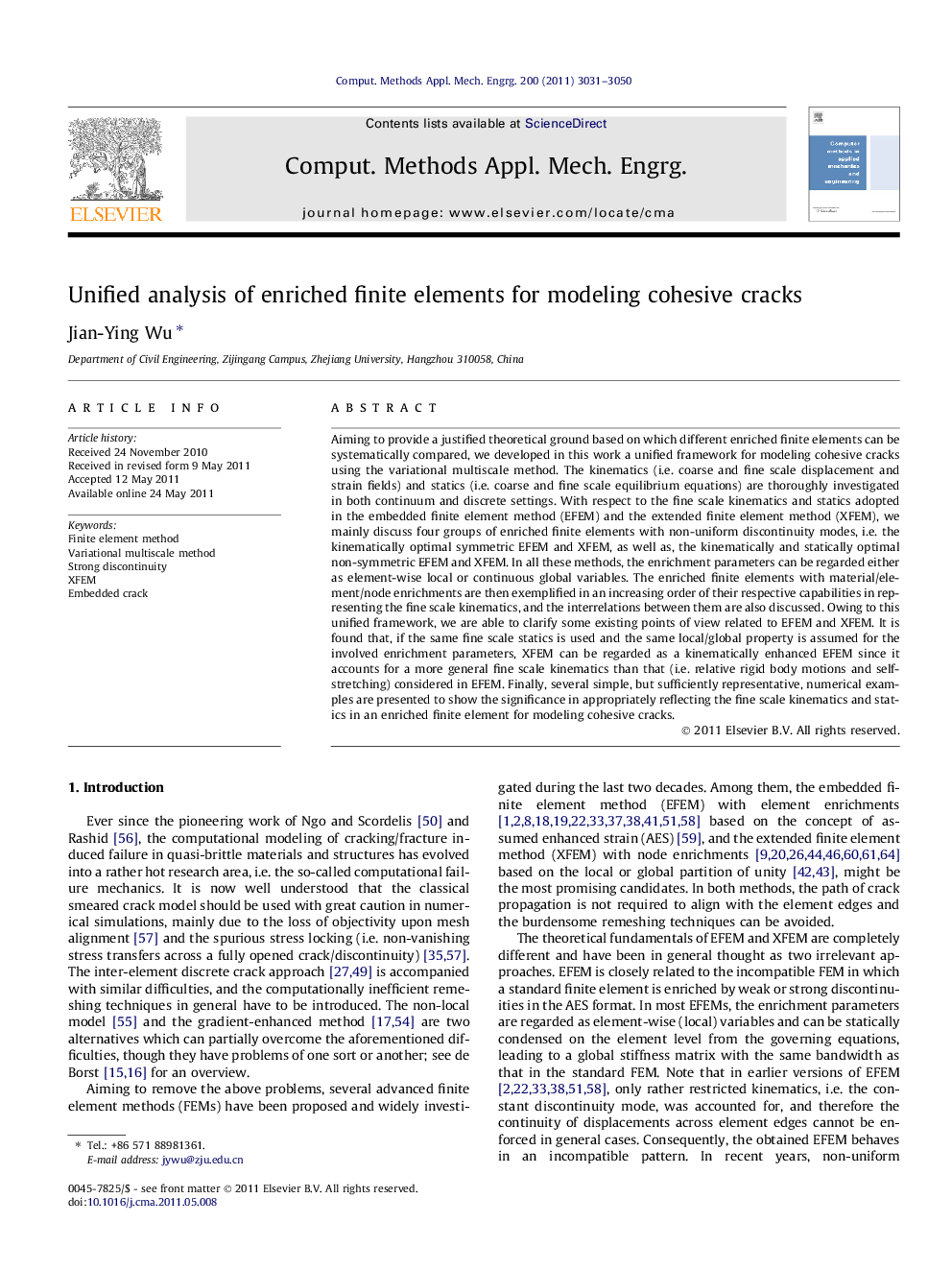| Article ID | Journal | Published Year | Pages | File Type |
|---|---|---|---|---|
| 498494 | Computer Methods in Applied Mechanics and Engineering | 2011 | 20 Pages |
Aiming to provide a justified theoretical ground based on which different enriched finite elements can be systematically compared, we developed in this work a unified framework for modeling cohesive cracks using the variational multiscale method. The kinematics (i.e. coarse and fine scale displacement and strain fields) and statics (i.e. coarse and fine scale equilibrium equations) are thoroughly investigated in both continuum and discrete settings. With respect to the fine scale kinematics and statics adopted in the embedded finite element method (EFEM) and the extended finite element method (XFEM), we mainly discuss four groups of enriched finite elements with non-uniform discontinuity modes, i.e. the kinematically optimal symmetric EFEM and XFEM, as well as, the kinematically and statically optimal non-symmetric EFEM and XFEM. In all these methods, the enrichment parameters can be regarded either as element-wise local or continuous global variables. The enriched finite elements with material/element/node enrichments are then exemplified in an increasing order of their respective capabilities in representing the fine scale kinematics, and the interrelations between them are also discussed. Owing to this unified framework, we are able to clarify some existing points of view related to EFEM and XFEM. It is found that, if the same fine scale statics is used and the same local/global property is assumed for the involved enrichment parameters, XFEM can be regarded as a kinematically enhanced EFEM since it accounts for a more general fine scale kinematics than that (i.e. relative rigid body motions and self-stretching) considered in EFEM. Finally, several simple, but sufficiently representative, numerical examples are presented to show the significance in appropriately reflecting the fine scale kinematics and statics in an enriched finite element for modeling cohesive cracks.
► A general framework of XFEM and EFEM for modeling cohesive cracks is developed. ► Both the kinematics and statics of enriched finite elements are discussed in details. ► A kinematically and statically optimal non-symmetric XFEM is preliminarily suggested. ► A smeared crack model is recovered in a CST FEM embedded with constant cracks. ► XFEM can be regarded as an enhanced EFEM with more involved crack kinematics.
